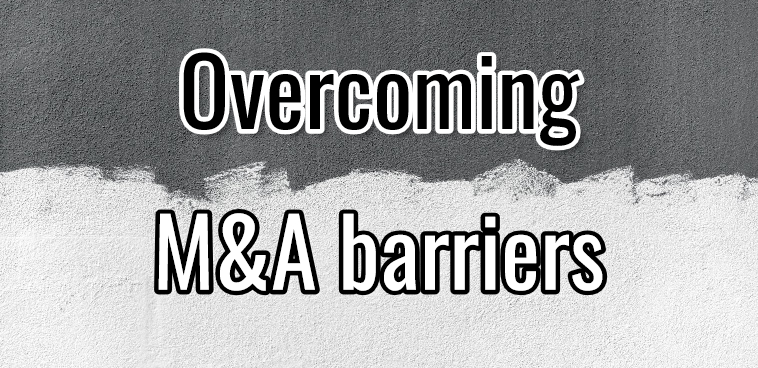“We don’t have a formal mentoring program,” fumed Stephen, a vice president at a recently merged communications behemoth. He was frustrated beyond words thanks to his inability to get members of his staff promoted into jobs that had been created by the merger.
Stephen worked hard but unsuccessfully to get his staff, many of whom were women, into these new jobs. Everyone was jockeying for the new roles. Stephen found it difficult to get those outside of his leadership stack to pay attention to his outstanding candidates. In his mind, a formal mentoring program would provide greater visibility to up-and-coming leaders.
So much of our post-merger discussion is focused on high-level aggregate issues like the impact on jobs or the deal’s accretive or dilutive effect on shareholder value. What we often miss is the realities of leading in a post-merger environment. Like Stephen, we can encounter barriers there are real and formidable. Barriers can be anything that impedes our progress in a desired direction.
Stephen isn’t alone in his experience of barriers. They are present everywhere in an M&A environment valued at more than $1 trillion last year, a number that is sure to be exceeded as we go forward thanks to announcements like Raytheon and United Technologies’ $100 billion deal and the $26.5 billion merger between T Mobile and Sprint.
Barriers come in all shapes and sizes in a company going through a M&A event. When I ask people to list these, the most common barriers that I hear are:
- “lack of communication at all levels and across and between groups”
- “no alignment of strategy with on-going changes”\
- “too many changes”
- “siloed mentality”
- “lack of infrastructure”
- “bias”
- “lack of resources”
Are these deals doomed from the start given all of these barriers? They needn’t be. What is imperative to succeed in these environments is less about recognizing barriers and more about altering our response to them.
Our response to barriers can vary. Some of us are motivated by barriers, as in “I’ll show them.” Others are cowed by barriers, stalled by their mere presence. Most of our responses stem from a belief that barriers are gating factors, impeding our ability to move forward in some fashion.
The lens of transition reveals that this point of view is false. Barriers in one form or another will always be present. Today it might be Stephen’s lack of formal mentoring, tomorrow it might be a critical knowledge gap that stands in the way. Given this persistence, our emphasis needs to be on how to succeed in the presence of barriers.
My work with organizations led me to create a two-step technique for moving forward in spite of a barrier’s presence. It is straightforward and powerful. It can be done individually or with your team.
First, make a list of barriers. Say them out loud. Give voice to them. While simple, this initial step can be illuminating. Second, focus on how the barrier influences you or your team. For example, if Stephen said lack of mentoring was a barrier, he might acknowledge that it was influencing him by blocking his efforts to get his employees promoted. That recognition might help him realize that there are other readily available avenues, like appointing his team members to key merger-related task force roles or setting up internal networking opportunities. The two-step process is intended to help Stephen reframe his options as he works on getting his employees promoted even if a formal mentoring program remains unavailable.
With more than $1 trillion annually in M&A deals, few of us will exist outside of environments touched by this activity. Barriers will be all around us. The key is not so much the presence or absence of a specific barrier, but our response to them. Is it time to consider how to move forward in light of your barrier’s presence?
Linda Rossetti is a Harvard MBA, serial entrepreneur and expert on transition and its impact on individuals and organizations.
If you enjoyed this article, sign up for SmartBrief’s free e-mails on leadership, finance executives and HR, among SmartBrief’s more than 200 industry-focused newsletters.
